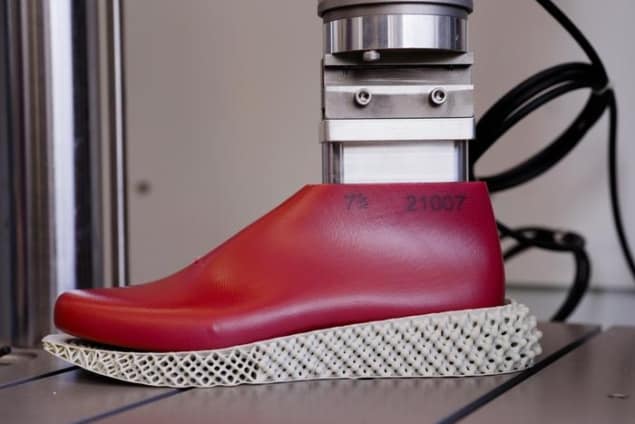
Courtesy: Melanie Gonick, MIT
Those who have taken up running in the new year will know that buying new shoes can be a daunting experience. The right running shoes can shave valuable seconds off your personal best, but with so many options, it’s easy to get intimidated before you’ve taken a single step.
But now researchers from the Massachusetts Institute of Technology (MIT) have developed a model that can predict the most efficient shoe for an individual based on their gait.
Running shoes are designed with varying amounts of stiffness and springiness in the sole, to cushion the joints and store energy. But because everyone runs differently, the shoe that works for one athlete won’t be as effective for another.
The researchers, led by Anette Hosoi, built a mechanical model of a runner’s foot that incorporates their height, weight and leg length, as well as the mechanical properties of different shoe soles. They used this to find the shoe that optimizes each runner’s efficiency.
The researchers hope that one day, customers will be able to have a personalized shoe 3D printed, based on a video of their running gait. This would be welcome news for runners; the ability to get an optimized performance without trying on dozens of styles would leave them plenty of time to train for their next race.
The research was published in the Journal of Biomechanical Engineering
Annoying aeroplanes
Physics World produces two podcasts and much of the recording is done in North Bristol – in my home office and in Andrew Glester’s Cosmic Shed. Unfortunately, we are on an approach for Bristol Airport, with aeroplanes from Ireland flying over our heads before turning over Bath to approach the airport from the east. Despite me having double-glazed windows and a well insulated loft and walls, the occasional aeroplane noise gets onto a recording.
So I was very pleased to hear that researchers at the Swiss Federal Laboratories for Materials Science and Technology (EMPA) have come up with a way to evaluate the noise of passenger aircraft of the future. They are focusing on blended wing body (BWB) aircraft, which have fuselages that merge seamlessly into their wings. This should result in less air resistance and lower fuel consumption. What is more, these aeroplanes will have their engines mounted above the fuselage, which should deflect much of the sound up into the sky, making it quieter on the ground.
But how can aeronautical engineers ensure that this design will please podcasters and others lovers of silence? Normally, complex computer simulations are done to estimate the sound from a particular design. But the human perception of noise can be a tricky thing to understand. To get a more realistic understanding of how a new aircraft will be perceived on the ground, the team subjected real people to simulated aircraft noise in a process called auralization.
This was done at EMPA’s AuraLab, where loudspeakers were arranged in a room to recreate the sounds associated with aircraft take-off and landing. The subjects listened to the sounds made by today’s aeroplanes and to the simulated sounds of future BWB aircraft. The listeners were asked to rate how annoying the sounds were on a scale from zero to 10. The study revealed that BWB aircraft are 4.3 units less annoying than conventional aircraft. That’s great news for Bristol podcasters.
You can read more here.
- SEO Powered Content & PR Distribution. Get Amplified Today.
- PlatoData.Network Vertical Generative Ai. Empower Yourself. Access Here.
- PlatoAiStream. Web3 Intelligence. Knowledge Amplified. Access Here.
- PlatoESG. Carbon, CleanTech, Energy, Environment, Solar, Waste Management. Access Here.
- PlatoHealth. Biotech and Clinical Trials Intelligence. Access Here.
- Source: https://physicsworld.com/a/lace-up-your-3d-printed-shoes-and-run-faster-reducing-noise-from-passenger-aircraft/



